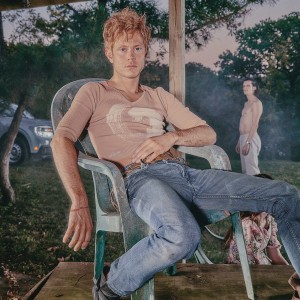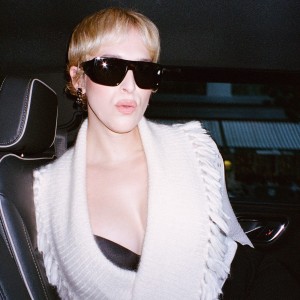
Lee Grant’s Top10
Lee Grant is an Oscar- and Emmy-winning actor and director. She has starred in Detective Story, The Landlord, Shampoo, In the Heat of the Night, and Valley of the Dolls and has directed many films, including the Oscar-winning Down and Out in America. Recently restored, her feature debut as a director, Tell Me a Riddle, has been acknowledged as the first major American film to be entirely written, produced, and directed by women.
-
1
Barbara Kopple
Harlan County USA
The first short film I directed, The Stronger, was invited to play at a festival in San Francisco. Right after it played, Harlan County USA came on. I was floored by the depth of those characters, the scale and immediacy of that story, and how it came to life without any studio support or trickery or magic. It amazed me that you could carry a camera out into the world and find these people and tell those stories without needing permission from anyone but the subjects themselves.
And when Barbara Kopple—unassuming, brilliant woman—stood up, it changed my life, it really did, because without that I would not have seen the possibility in documentaries.
Her husband at the time—Hart Perry, who shot Harlan County USA with her—was the cinematographer on many of my documentaries as well. We were shooting in a women’s prison once, and Barbara asked if she could do sound. I said no—she was someone I was looking up to as a documentarian; she had no business running sound on my little film. She said she needed a job—and, to be clear, this was after she won an Oscar for Harlan County. She said she’d started with sound, it’s what she did. She came on board and did the sound with her baby on her back in the bowels of these prisons.
-
2
Josef von Sternberg
The Scarlet Empress
Dietrich was just glorious. She may be the star I most remember loving as a little girl. All of these films are incredible. Her ability to create and invert a star persona is fascinating to this day. Her films with von Sternberg are dreamy, and I’d like to think their collaboration was as well. I think of her gowns in his beyond meticulous lighting in The Scarlet Empress. And of course Morocco. She is what a movie star was to me—beautiful and strange and entirely irrepressible.
-
3
Elia Kazan
A Face in the Crowd
What an incredible film. This particular concoction of fear, satire, showbiz, and fame—I’m not sure there’s another like it. Everyone should see this film; it just cracked America right open and tossed it up on the screen.
It’s that constant struggle with Kazan. That he could be this brilliant, this prolific, and have cooperated with HUAC at the same time is hard to reconcile, but without his contradictions, we wouldn’t have these films.
-
4
Edouard Molinaro
La Cage aux Folles
This one is just such wild, wonderful fun. The production design alone! But it was really the stage version of this film that had the biggest impact on me. After finishing the women’s prison documentary with Barbara Kopple and Hart Perry, I saw the Broadway version and thought that this world of queer performance looked so life-affirming, so fun, that it would be an important but upbeat change of pace for our next documentary.
I wasn’t entirely right. That film became What Sex Am I?, which to this day is one of my favorite of our docs, but the further we explored the trans communities of that time it became clear that these were people fighting for their survival. An embattled group. Perhaps that much hasn’t changed.
But La Cage aux Folles—in this form, as well as in its Broadway and Birdcage incarnations—is a delight, and without it I would never have found my way to our documentary.
-
5
Hal Ashby
Being There
Hal Ashby was my favorite director. He had such a way with actors, such a faith in them. Being There has so many Hal things about it, including that charming, off-kilter blend of wit and optimism and grassy logic. He loved the movies.
On In the Heat of the Night, a film he was technically the editor on (before he directed a film of his own), he went shopping with me to put together that character’s wardrobe. He had that kind of hands-on interest in character.
Years later, right at the height of his career as a director, he brought a Moviola over and spent a day or two helping me edit the first short I directed.
And Melvyn Douglas is just so funny and strange and magic in this one. I think he made this with Hal, and then very soon after came to make Tell Me a Riddle with me. He was still bringing his Ninotchka charm, which had served him so well for his whole career.
-
6
Ingmar Bergman
Persona
What can you say about Bergman? Genius, incomprehensible genius. But the women in Persona, those performances, were like something out of another world. The “Who is who? Am I you?” balance could so easily fall apart; it should have, but I couldn’t look away from a single frame. Fire—fire in those women in that icy, icy world.
Years later, when Bergman was working less, his longtime cinematographer Sven Nykvist shot a TV movie I was directing in Canada. He told me he showed it to Bergman; I just about passed out.
-
7
Robert Altman
The Player
Bob was a friend, and also a movie-law-breaking inspiration. He made so many great, great films, but this one is just so fun—and a great example of his unique artistry blending perfectly with a multiplex-ready genre. He cut me out of it, but who’s counting? We were at the gala he had to throw in the film—fun night. Great film. Whoopi Goldberg’s performance in this is a delight all its own.
-
8
Agnès Varda
Cléo from 5 to 7
I just remember being so grabbed by this film, and by the way the girl moves through her day, her two “real” hours, the incredible combination of fluff and fun and girlish curiosity and a woman’s striving despite her mortality. So much is packed into that film, and yet so little happens. I’ve had days like that; to some degree, we all must have. Agnès Varda’s documentaries are also entirely unique; just the idea of them is inspiring.
-
9
Billy Wilder
Ace in the Hole
Kirk Douglas made so many important films and gave so many great performances. But this one, with its intoxicating huckster journalist, is a different kind of prescient than many of the others. The studio was spooked when they saw the final cut, changed its title at the last minute, and pulled much of its support. That may be an indication of what a good picture it is. Kirk really came alive in these delicious rake antihero roles; this and The Bad and the Beautiful are two of his best in that vein.
It shouldn’t be a surprise that the guy who wanted to star in this film also fought so hard against the blacklist. He had that volcanic energy his whole life—in these films; decades and decades later, when we made our doc on the Douglas family; and all the way to the end.
-
10
Claudia Weill
Girlfriends
Claudia Weill—wow. This is just a wonderful film. It had so much to say, and so much fun to give when it came out, and it still does nearly fifty years later! And it felt like it came out of nowhere!
The great cinematographer Fred Murphy shot this, and I’m so lucky that he did, because it was the only thing on his résumé when we found him for Tell Me a Riddle. I really think it was the only feature he’d made at that point, but that certainly meant he’d shot more films than I’d directed.
We went on to make many other films together. I’ve always done my best to stick with the same handful of really brilliant cameramen, because I don’t know about any of that. I know the actors and the stories and how I want something to feel. When I’ve said that to Fred he usually responds, exasperated, “Lee, it’s just trigonometry.” But what he and Claudia Weill accomplished with Girlfriends is so much more than “just trigonometry.”














